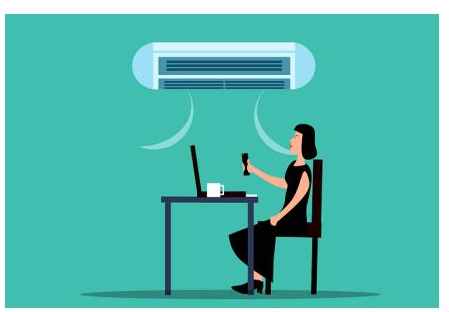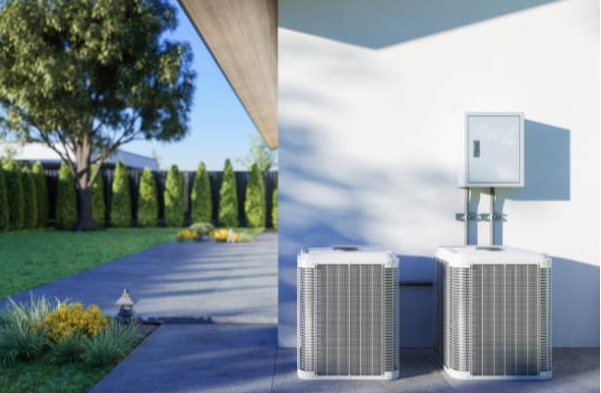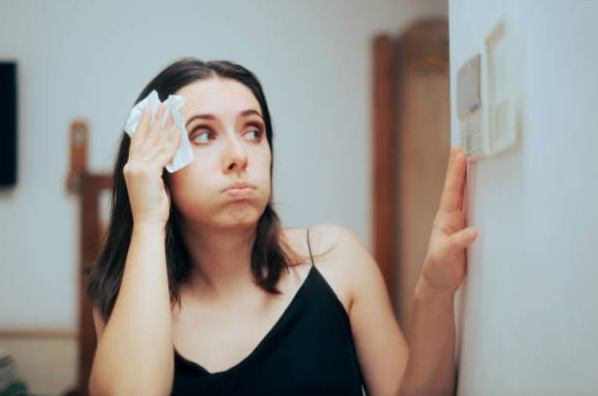Whole-house ventilation systems are becoming more popular among health-conscious and comfortable households. These devices circulate clean air throughout the house to improve indoor air quality. Is whole-house ventilation right for you? Explore this investment's pros, disadvantages, and costs.
Whole-house ventilation improves home's environment
Beyond airflow, whole-house ventilation systems have additional benefits. Enhanced indoor air quality, comfort, and health depend on these systems. Whole-house ventilation has various advantages.
Better Indoor Air
One of the major benefits of whole-house ventilation is better indoor air quality. Airborne pollutants like dust, pollen, pet dander, and VOCs can pollute indoor air. These contaminants can pile up without ventilation, reducing IAQ and raising health hazards. To neutralize interior pollutants, whole-house ventilation systems regularly replace stale indoor air with outdoor air. These systems filter outdoor air to remove allergens and irritants, making living spaces healthier for residents, especially those with respiratory disorders.

Whole-house ventilation decreases moisture, preventing mold and mildew in poorly ventilated homes. Moist conditions breed mold, dust mites, and other pests. Ventilation systems minimize allergy growth by maintaining humidity, making indoors cleaner and healthier.
Improved Comfort
House thermal comfort requires proper ventilation. Stagnant air and poor circulation can create temperature variations and discomfort. Year-round comfort is improved by whole-house ventilation systems that control indoor air temperature and humidity. Summer ventilation systems remove heat and humidity, cooling indoors. These systems reduce air conditioning demand and energy costs by bringing fresh, cooler air into the home.
In colder climes, whole-house ventilation systems with heat recovery can transfer heat from outgoing air to entering fresh air. This procedure maintains indoor warmth and ventilation in winter, boosting comfort and energy efficiency.
Health Advantages
Indoor air quality dramatically impacts health. Reduced IAQ can cause respiratory, allergy, asthma, and cardiovascular issues. Whole-home ventilation systems lessen these risks by providing clean air. Indoor dust, pollen, and VOCs are reduced via ventilation systems, enhancing respiratory health. Good ventilation may aid asthmatics and allergy patients.
Airborne pathogens like viruses and bacteria are reduced by proper ventilation, reducing respiratory infections and other illnesses. Improved indoor air quality through ventilation is vital for public health in the face of infectious diseases.
Efficient Energy
Although contradictory, whole-house ventilation systems reduce mechanical heating and cooling, saving energy. Controlling interior air quality and temperature, ventilation systems boost HVAC performance and energy efficiency. Good ventilation reduces summer air conditioning needs by increasing natural airflow and cooling the interior with fresh outdoor air. Lowers energy bills and the environmental effect of overuse.
In colder climates, heat recovery ventilation systems transfer heat from outgoing air to new air. This decreases ventilation heat loss, letting homeowners maintain comfortable inside temperatures without overusing heating systems.
Environmental Impact
Homeowners and the environment benefit from whole-house ventilation systems' carbon reduction and sustainability. Ventilation systems maximize energy efficiency and reduce fossil fuel-powered heating and cooling in residential buildings.
Ventilation systems lessen external air pollution by purifying it before bringing it indoors. This benefits inhabitants and helps fight climate change and air pollution.
Pre-installation Considerations
To choose the best whole-house ventilation system for their needs, homeowners must carefully evaluate several things before installing one. Each factor affects the ventilation system's performance, from home size and layout to climate and installation costs. Let's explore these factors to help homeowners decide.

House Size and Layout
The size and layout of your home are important when choosing and building a whole-house ventilation system. The ventilation system must circulate air throughout the house to maintain indoor air quality.
Square footage
Larger dwellings need stronger ventilation systems with higher airflow rates to circulate air farther. However, smaller ventilation systems may suffice for smaller homes.
The number of floors
Air must move properly between floors in multi-story homes, making ventilation difficult. Air must reach all levels of the home through proper ductwork design and placement.
Room Setup
Room layout affects airflow and ventilation. Open-concept design may simplify airflow, but segmented layouts may need supply and return vent placement.
Ceiling Height
High-ceilinged homes may need bespoke ventilation to distribute air evenly. Higher ceilings can stratify air, sending warmer air up and underventilating lower floors.
Climate Issues
Climate affects house ventilation needs. Temperature extremes, humidity, and seasonal fluctuations affect ventilation system design and functioning.
Extreme temperatures
Extreme temperatures may necessitate ventilation systems with extra features to keep homes comfortable year-round. In colder climates, heat recovery systems can preserve indoor heat in winter, whereas in hotter climes, greater cooling may be needed to prevent overheating.
Levels of humidity
High humidity can cause mold and mildew in indoor air. Humidity sensors or dehumidifiers in ventilation systems can reduce moisture-related issues.
Variations by season
Seasonal homes may need ventilation systems that adjust to changing conditions. No matter the weather, adjustable airflow rates and temperature controls can maximize ventilation performance and interior air quality.
Ventilation Current
The effectiveness of current ventilation systems should be assessed before constructing a whole-house ventilation system. New ventilation system selection and design might be informed by inadequacies or areas for improvement.

Spot ventilation
Check bathroom, kitchen, and laundry room exhaust fans for efficiency. These systems remove moisture, smells, and contaminants from individual rooms and may work with a whole-house ventilation system.
The ductwork's condition
Check existing ducting for leaks, cleanliness, and insulation. Low-quality ductwork can leak air and limit airflow, reducing ventilation system efficiency.
The airflow distribution
Evaluate how well heating and cooling systems move air around the home. Uneven airflow or room temperature differences may suggest ventilation concerns the new system must fix.
Installation Costs
The cost of building a whole-house ventilation system depends on the home's size, complexity, and ventilation technology. Prior to installation, homeowners should seek detailed cost estimates and examine their budget.
System Parts
Whole-house ventilation systems cost the central fan unit, ducting, ventilation ports, controls, and any accessories. Premium systems with extensive features may cost more.
Installing Complexity
If home building or HVAC system changes are needed, ventilation system installation might be complicated and cost more. Accessibility, building codes, and municipal laws may affect installation costs.
Long-term savings
Despite the cost, a whole-house ventilation system can save homeowners money on energy and upkeep. Savings can come from lower energy costs, longer HVAC system longevity, and better indoor air quality.
ROI
Assess the ROI of a whole-house ventilation system for enhanced indoor air quality, comfort, and energy efficiency. The ROI may vary, but many homeowners find that the long-term benefits surpass the original outlay.
Right for You?
Your demands, finances, and tastes determine whether you need a whole-house ventilation system. The initial outlay may seem daunting, but many households find that increased air quality, comfort, and energy efficiency exceed it.
A licensed HVAC technician can examine your home's ventilation needs and recommend the best whole-house ventilation system.
Conclusion
Complete indoor air quality solutions include whole-house ventilation systems that circulate fresh, filtered air. Many homes find such a system worth the planning because it improves air quality, comfort, and energy efficiency.
Contact ME Flow for additional information or a whole-house ventilation system installation quote.

